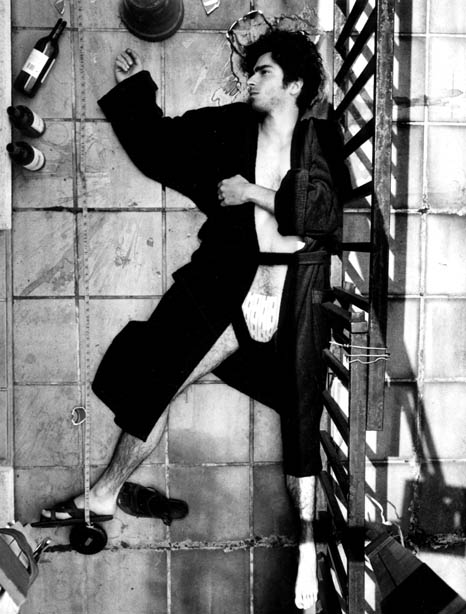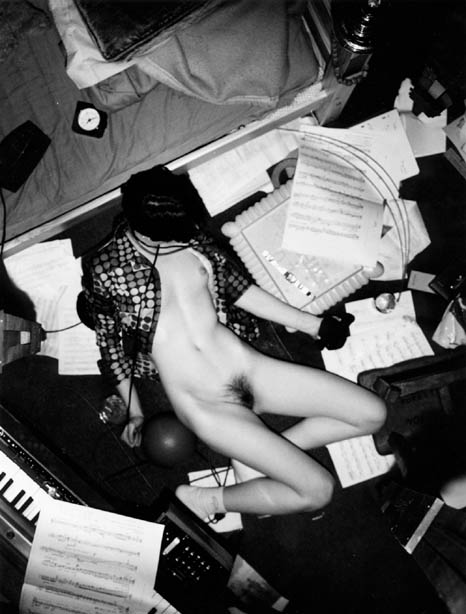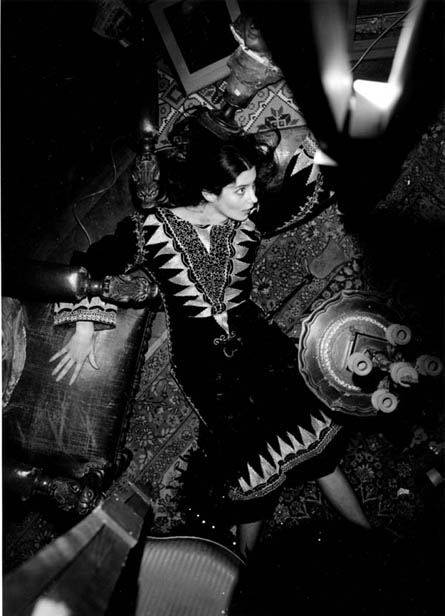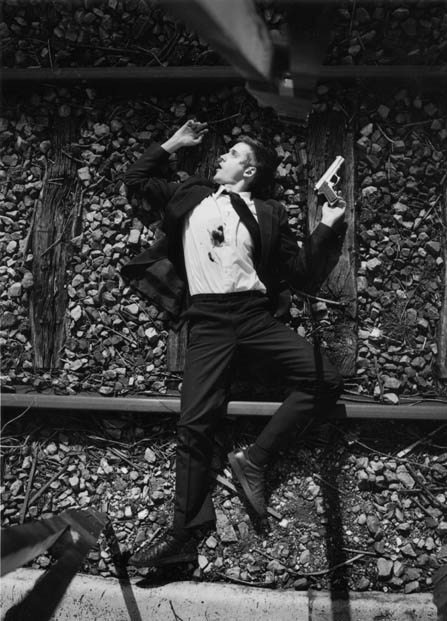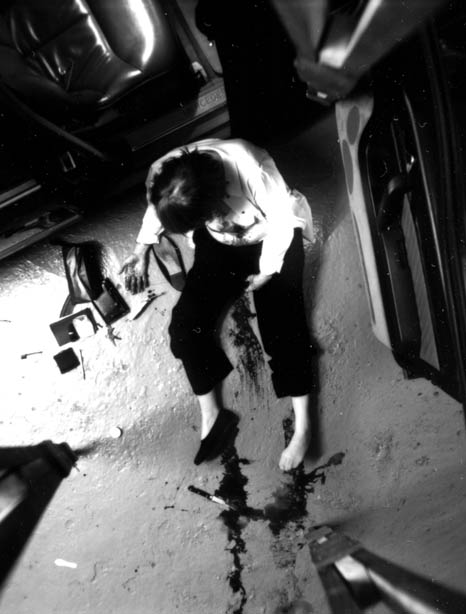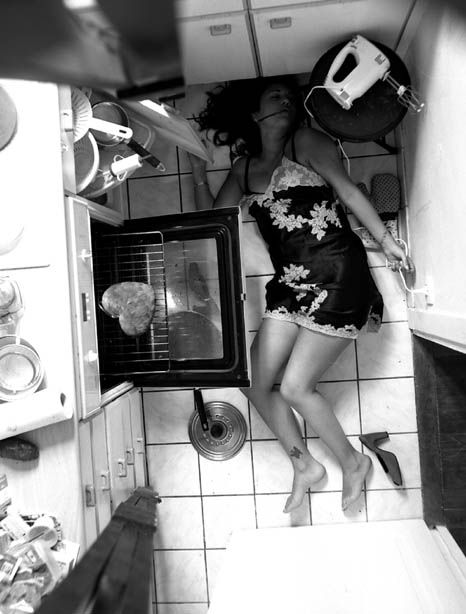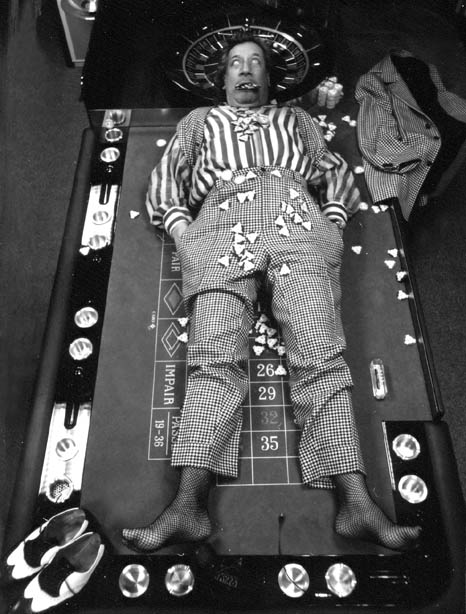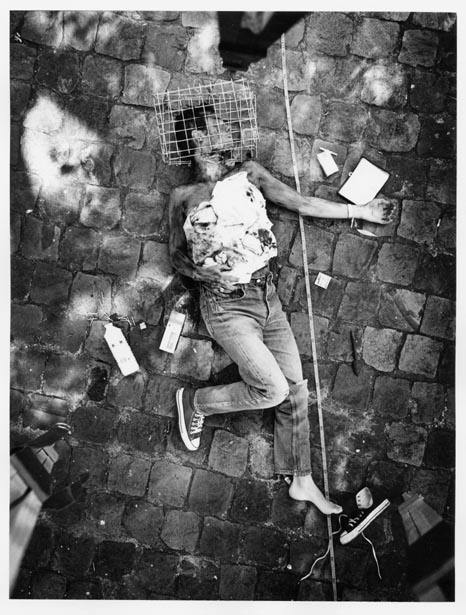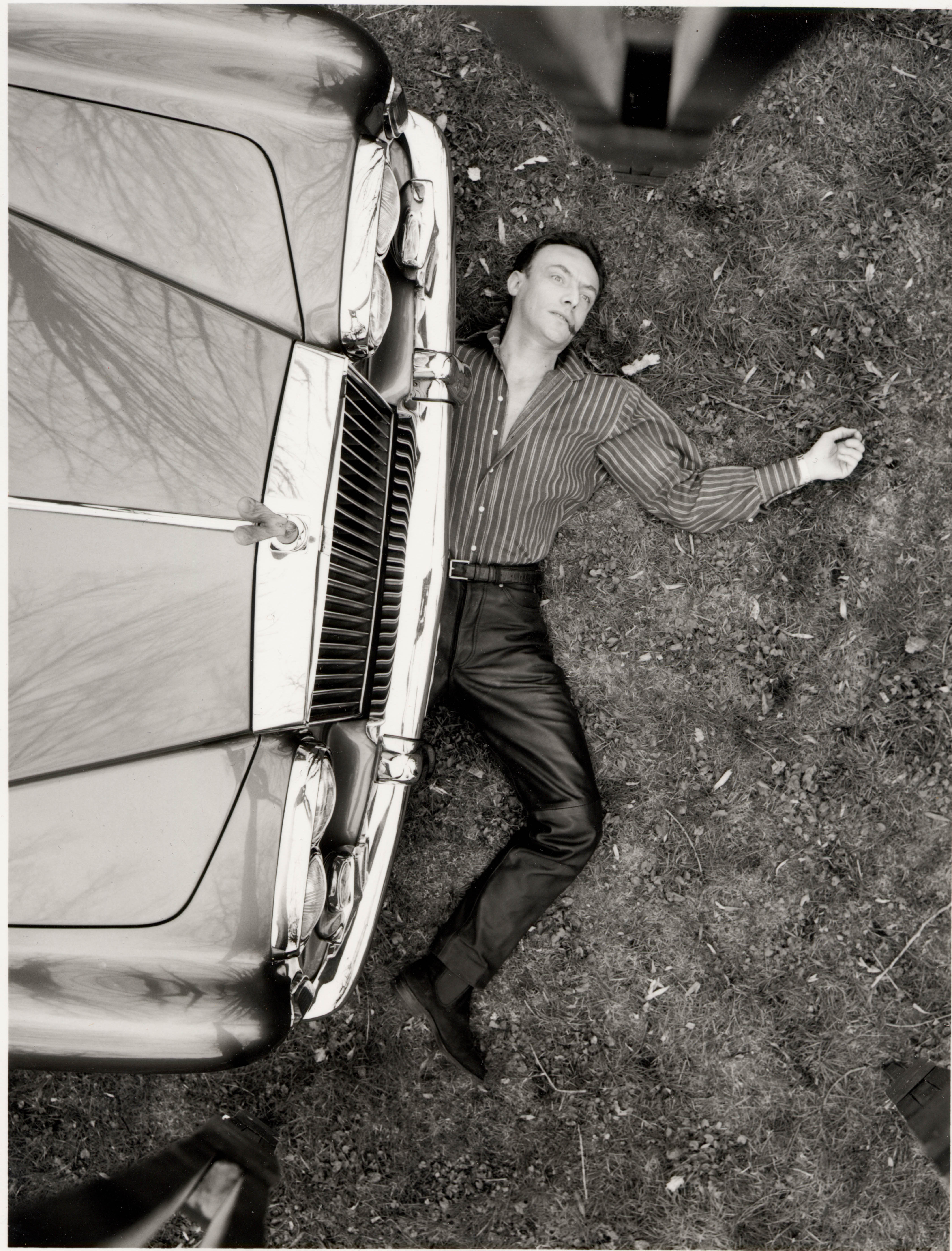The apparent incongruity of the project is moreover claimed by the title: the "liquidated" individual plays at the same time, in addition to the role of the victim, that of the sponsor and of the hired killer; it is of course a suicide as fictitious as disguised, orchestrated by the plastician who claims the double title of "artist-investigator" and of "scientific adviser" of Ouest-Lumière. It is his fascination for the first systematic photographs of corpses on the scene of the murder, dating from the end of the XIXth and the beginning of the XXth century, which can shock, by their prosaism, but also, it is necessary to admit it, to seduce us, which is at the origin of his macabre neo-scientific ritual. Yann Toma, in this recording procedure, seems at first sight to scrupulously quote the method codified by Bertillon: the corpse almost always lying on the ground or on its bed, entirely photographed from above with the help of a tripod, the lens placed at a height of 1.50 m. However, he never ceases to insidiously subvert it with an undeniable deadpan. With an obvious and hilarious taste for the absurd, he laboriously reproduces all the steps of the police procedure, obviously reversed, to add a little more nonsense in the excess of scientific method, of repressive rationalism... Showing an obvious taste for the settings and the outdated instruments, the photographs of Crimes on order are also the stopped images of macabre tales which evoke at the same time the prosaism of our daily life, and the mothballs charm of the cupboards of our ancestors, hiding the secrets of the past, all these unavowable family tragedies.

